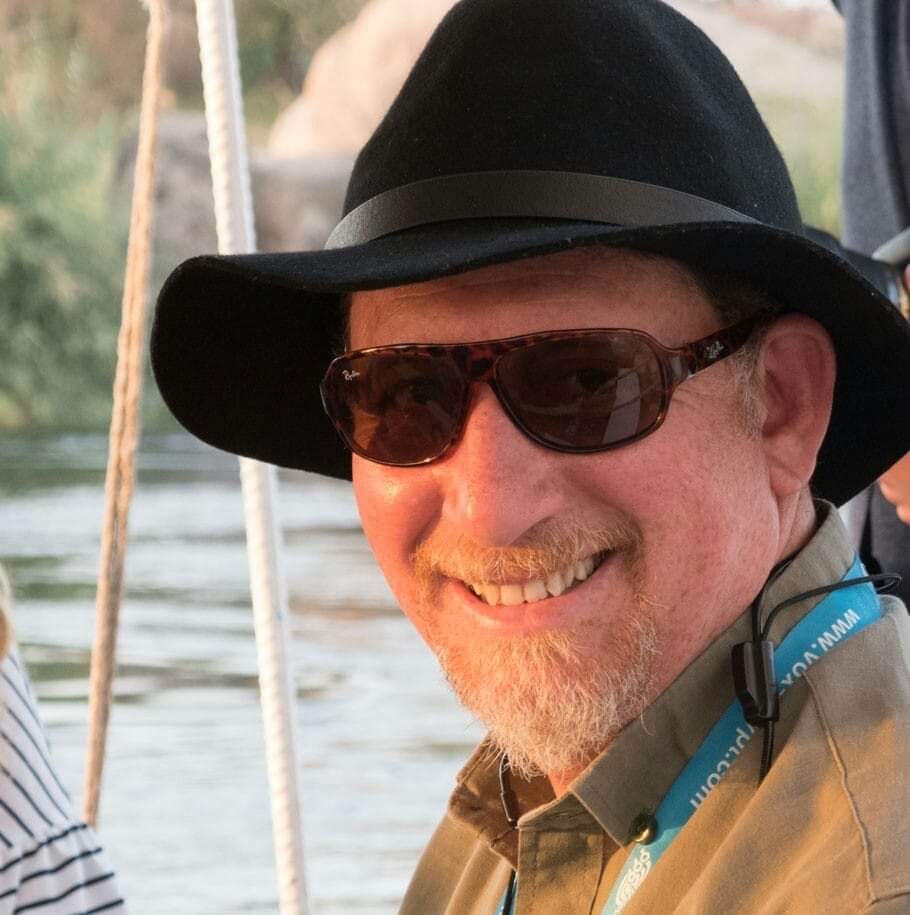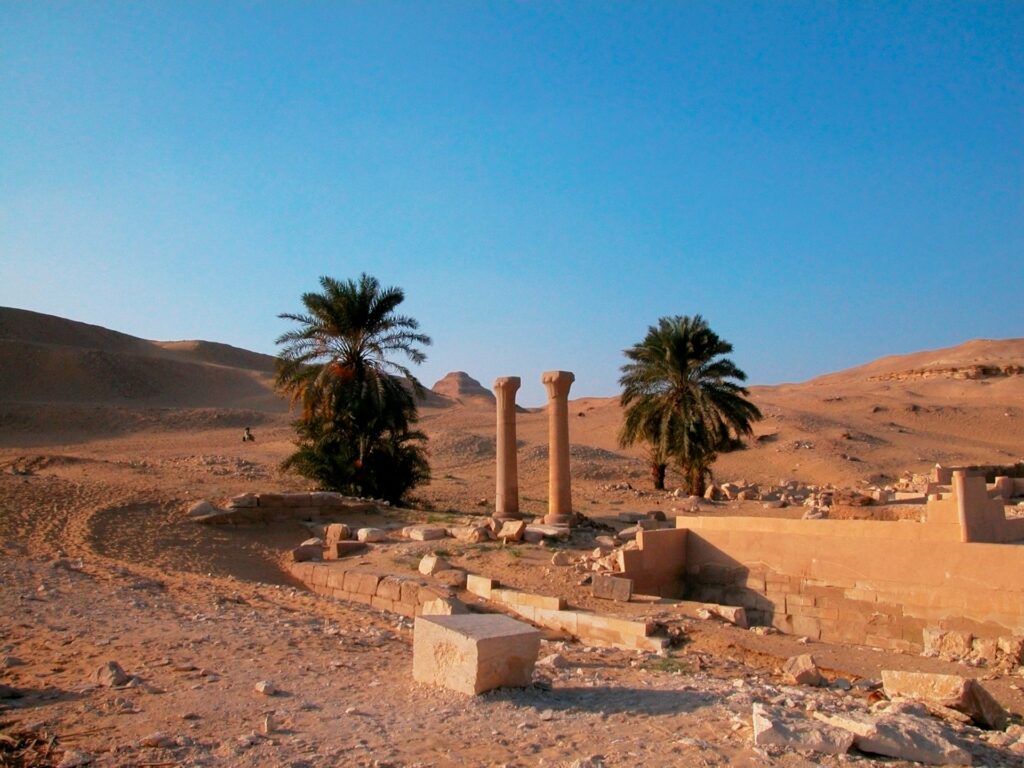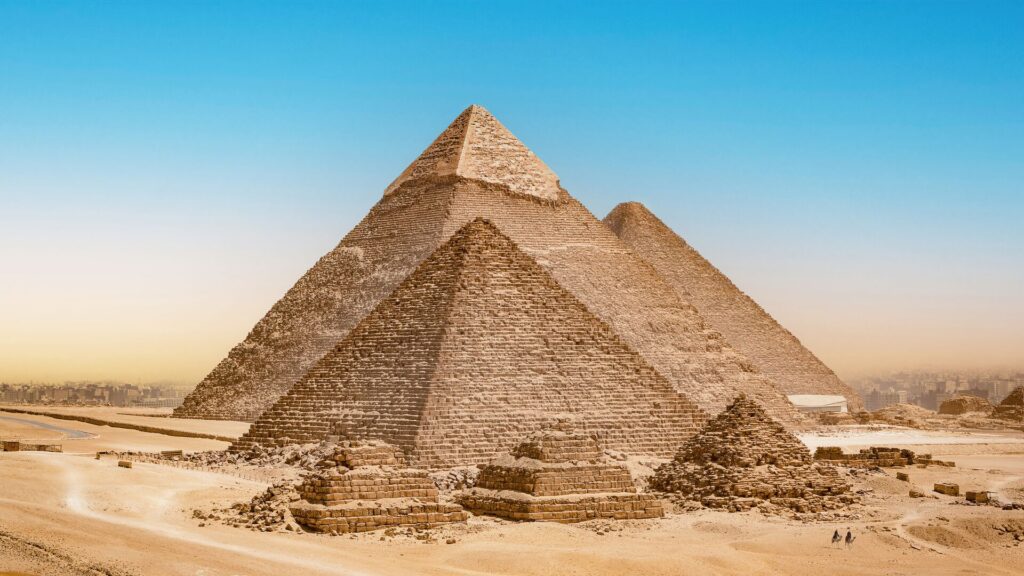We Sent Our Staff to Experience Egypt for the First Time - Here's What They Learned
How Egyptian Archaeology Continues to Astound the World, with Egyptologist Hani
Exploring the ancient wonders of Egyptian archaeology is a journey through time, unveiling mysteries that continue to captivate the world. From the towering pyramids of Giza to the intricate hieroglyphics adorning temple walls, the legacy of Egyptian archaeology is a testament to the ingenuity and artistry of a civilization that flourished thousands of years ago.
With new discoveries being made daily, we spoke to Travel Director and Egyptologist Hani, this week’s Insightful destination expert, to learn more about some of the most significant recent finds.
You’ll find clues to this week’s Insightful travel trivia questions in the article, so once you’ve finished reading why not play the game?

The new Grand Egyptian Museum promises 12 rooms dedicated to the treasures of the tomb of Tutankhamun, around 5,600 items never seen before
An endless archeological treasure trove
Throughout Egypt, archeological discoveries are still being made, each one either confirming or changing Egyptian history as we know it. One of the most prevalent places for significant finds is the UNESCO World heritage site of Saqqara, part of the necropolis of the ancient Egyptian capital Memphis. Located 15 miles southwest of the modern capital Cairo on the west bank of the Nile River, Saqqara is the site of some of ancient Egypt’s most ancient ruins. It contains the oldest complete stone building complex known in history, the Pyramid of Djoser, built during the Third Dynasty.
“Saqqara has been a royal necropolis and royal cemetery for the last 4000 years,” says Hani. “There you will find traces of Egyptians, Greeks, Romans, Christians and Arabs. And still, they discover new tombs. It’s no exaggeration to say that Saqqara could have a daily discovery in one way or another.”
Every day in Saqqara – a mummy’s tale
“In fact, I’m excited to share a funny story with you, that really shows what I mean,” he says with a smile. “One day I was walking near the sand dunes in Saqqara with some guests. It was a family, the father, mother and two children, one of who had freshly graduated from university, where he studied medicine. As we were passing the sand dune, he noticed a little bit of a bone, like a hip bone, sticking out of the sand. He pulled at it, and we found it was wrapped in pieces of linen, layers upon layers like a mummy.
“So, we called The Antiquities and the police to come to witness this great discovery. We got really excited because we were thinking about what we’re going to call this mummy – were we going to name it after myself or name if after the group? I dreamed of having a memorial under our name.
“When The Antiquity guys arrived however, they were upset – they said this is a daily discovery by silly tourists like us! They explained that they uncover mummies like this every day in the desert, in fact 1000s of them are buried in the sand. They call them poor burials; the mummy of the workers which tourists often dig out. So, a mummy is truly something that you can discover in Saqqara on a daily basis.”
January 2024: A rock-cut tomb, over 4,000 years old, with astonishing treasures
“What is unusual is what they discovered at the start of 2024,” Hani tells us. “Unlike the tombs of Saqqara which were built of rocks, they discovered one that had been carved into the mountain some 4,500 years ago.” A joint Egyptian Japanese archaeological mission involving the Ministry of Tourism and Antiquities and Kanazawa University came across this great discovery of Egyptian archaeology, unearthing astonishing treasures.
“This was particularly exciting because it belonged to the second dynasty. Despite all the discoveries, we have lots of information on the Old Kingdom, but we don’t have much information about the First Dynasty through to the Sixth Dynasty. So, these could reveal valuable historical insights. This tomb also featured multiple graves and artefacts that span different historical periods.
“History is like this. You don’t discover everything at once. It’s like a puzzle – you need to put pieces bits and pieces together. As you discover information about earlier times, it can change some of the history as it was known.”
In Egyptian archaeology, each new puzzle piece is important
“The tomb that was found dates back to 2686 BC, and belonged to a nobleman, a priest,” says Hani. “Within the tomb the scenes are very interesting and are a precious source of information for archaeologists and Egyptologists. Painted on the walls, they depict daily life and were created with love. They also found an adult mummy, a child mummy, a gold leaf mask, jars and amulets kept inside this tomb all dating back to the second dynasty.
“On the other hand, in the same rock tomb in Saqqara there were sort of catacombs, which belonged to the Roman time. In Egypt, we already have a catacomb that is in Alexandria by the Mediterranean Sea, which dates to the first and second century AD and we thought that there wouldn’t be other catacombs around the area of Saqqara.”
Two terracotta statues depicting the ancient Egyptian goddess Isis, a deity initially prominent in funerary practices, and the child deity Harpocrates, the god of silence and secrets in the Ptolemaic periods were also discovered.
“Unfortunately, these things are not open yet for public to tourists to go and explore, because it takes a while to restore and finish.”
January 2023: the tomb of ‘Messi’ and the best-preserved non-royal ever
In January 2023, the results of a year-long excavation at Saqqara were presented – findings included two ancient tombs from the Fifth and Sixth Dynasties of the Old Kingdom (around 2500 – 2100 BC) and a well-preserved sarcophagus.
“As I say there is a discovery almost every day at Saqqara,” says Hani. “These tombs were from the Old Kingdom, when Memphis was the capital of Egypt. We’re talking about the oldest capital in Egypt and in the world – almost more than 5,000 years old. Located on the east of Saqqara, the kings used to live in Memphis and whoever died, they used to bury them on the site. So, Saqqara served as a royal cemetery.
“One of the tombs belongs to high priest during the time of King Bibi from the Fifth Dynasty, about 2400 BCE. When they first found the tomb, they knew this man was the overseer of the nobleman, the inspector of the workers, they found nine statues for him and for his wife, but none carried his name. Then, a couple of months later, they were able to find a false door which had on it the name ‘Messi’. This of course captured the imagination of many people across the world!”

A coffin sealed for 4,300 years
“The second tomb belonged to a judge from the Sixth Dynasty,” says Hani. “It was discovered about 30 feet (10 meters) underground. Inside the chamber they found a wooden coffin, very beautiful in a very good condition, that had been sealed for 4,300 years. And inside they found a mummy of a nobleman, believed to be the best-preserved non-Royal mummy ever discovered.
“Think about this for a moment and let me put you in the picture. When they discovered the tomb, they had the coffin right in the front of them. Made from wood and colored, its beautiful. Inside is a very well-preserved mummy and a roll of papyrus, also preserved for 4,300 years. Despite the excitement, they cannot open it right away. If you exposed it to the air of the tomb, it would become ash right away and vanish. So, they had to leave these things inside the tomb for a while until they vacuum the air, to refresh the tomb before they actually take such treasures of Egyptian archaeology outside.”
Save up to $3,000* per couple on your first Premium Tour
Plus receive latest offers, travel inspiration, and discover how your travels will make a positive impact. Together, WE MAKE TRAVEL MATTER®. Subscribe NowMarch 2023 – Great Pyramid hidden corridor
“Another highly significant recent discovery is that of a secret tomb inside the Great Pyramid,” Hani tells us. “Announced in March 2023, this was highly significant to the world. All eyes are on the Great Pyramid of Giza as the only surviving structure of the seven wonders of the ancient world.
“The Great Pyramid has a public entrance to go inside to reach the main burial chamber of the King. Discovered in the 10th century AD by one of the Arab kings, inside is a sarcophagus made from one piece of granite which is bigger than the size of the door, meaning it was safe from tomb robbers and remains intact.
“Now a second entrance passage has been revealed, the result of six years of work. The Egyptian Antiquities worked together with a German mission and American archaeologists, using new technology to scan the pyramid.
“About 27 feet (9 meters) long, the second entrance leads to a large stone which blocks the passage. In the last season of 2024, archeologists made small holes into this rock and sent a camera behind. They discovered a large cavity behind the rock, which could be as big as the one that we know as the main burial chamber. So, we’re sure that there is another chamber behind the stone that will be discovered soon.
“When considering this relevance to Egyptian archaeology, it’s important to note that the mummy of the King hasn’t been found, nor the coffin, the gold and the treasure. So, we believe that the King may be buried somewhere inside the pyramid that we don’t yet know. That’s why the world should be very excited about this new discovery. This may change a lot of the history as well. As the archaeologists say, stay tuned for 2025 – there will be a great discovery inside the pyramid.”

The Grand Egyptian Museum
Set on the Giza Plateau near the iconic pyramids, the Grand Egyptian Museum promises to be a magnificent ode to Egypt’s history and cultural heritage. Set to be the largest archaeological museum in the world, this architectural marvel will house a treasure trove of artifacts, spanning thousands of years of Egyptian civilization and promises an unparalleled immersion into the wonders of Ancient Egypt.
“For various reasons, the opening of the museum has been delayed for a number of years, but recently they’ve accelerated towards opening to the public,” Hani tells us. “The Egyptian Government and the Egyptian Antiquity and Tourism Ministry have invited tour companies to visit the museum, to introduce the new museum to the guides because we are the ones who are going to explain it. So, I was lucky to get a look inside.
“’Amazing’ is not enough to describe it – it’s going to be beyond our imagination, something that Egypt will be very proud of. Advanced technology is being used for the display of the pieces and there will be some 100,000 pieces. We were shown three rooms out of the 12 that hold treasures from the tomb of King Tutankhamun – around 5,600 pieces, many shown for the first time.
“Most of the delay is due to the infrastructure surrounding the museum, rather than the museum itself. Something this amazing needs befitting surroundings including roads, public transport, etc. And work is taking place to connect a walkway and bridge to the Great Pyramid, to make it the ultimate destination.”
To discover the wonders of Egyptian archaeology for yourself take a look at our “Business Class” Tours to Egypt.
LIKED THIS POST? SHARE WITH YOUR COMMUNITY




